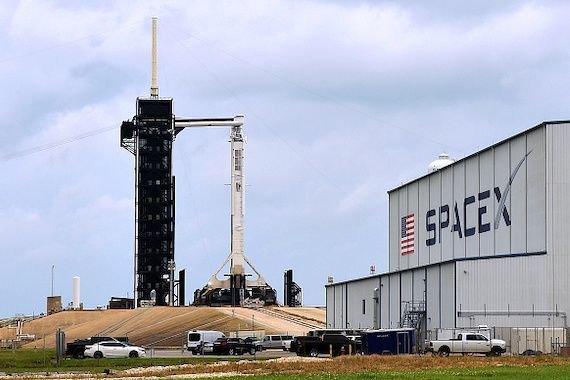Without a rocket, there is no deployment of satellites or all the resulting applications (communication, positioning, Earth observation). (Photo: Getty Images)
Paris – Space launch vehicles such as the Ariane 6, whose first flight has been delayed until 2023, abound around the world, reflecting the ambitions of nations to have their own access to space.
Launch services account for just 8 of the $337 billion space market in 2021, according to specialist firm Euroconsult. But without a rocket, there is no deployment of satellites or all the resulting applications (communication, positioning, Earth observation).
Here is an overview of the main launchers in the world.
Falcon 9
Scarecrow of the space sector. The reusable rocket from SpaceX, the company created by billionaire Elon Musk, has been launched 159 times since its first flight in 2010. Nearly 50 of those launches were dedicated to putting SpaceX’s own constellation of satellites into orbit, Starlink.
The Falcon 9 is also launched on behalf of the US government and NASA at a premium that allows it to offer lower prices to its other commercial customers, according to competitor Arianespace.
It can deliver almost 23 tons to Low Earth Orbit (LEO) at an altitude of several hundred kilometers and 6.7 tons to Geostationary Transfer Orbit (GTO) (36,000 kilometers from Earth)
SpaceX has also developed the Falcon Heavy, which is capable of placing 64 tons into low orbit and nearly 27 tons into GTO.
Ariane 6
The European launch vehicle operated by Arianespace must replace the Ariane 5 heavy launch vehicle, which still has 4 launches left (113 completed).
Ariane 6 will be available in two versions. The one with two boosters (side thrusters) is comparable to the Russian Soyuz and will be able to carry 10 tons to low orbit and 4.5 tons to GTO. The one with four boosters will be Ariane 5 class (20 tons in LEO, 12 tons in GTO).
Soyuz
In addition to Russian spaceports, a Russian medium launch vehicle was launched 27 times from Guyana between 2011 and February 2022.
It has been available in several versions since the 1960s and has been printed over 1,000 times.
It can carry 9 tons in LEO and 3.2 tons in GTO.
Vega
Italy’s Vega rocket, also operated by Arianespace, has made 20 launches since 2012 and can carry 2.3 tonnes into low orbit. It will be replaced by the more powerful Vega-C, due to be launched in July.
Delta IV and Atlas V
Two United Launch Alliance (ULA, a joint venture between Boeing and Lockheed Martin) rockets have been launched 42 and 92 times since 2002, mainly for the needs of the US government.
Their respective payloads are 29 and 25 tons in low orbit, 14 and 12.6 tons in geostationary transfer orbit.
They must be replaced by the Vulcan rocket, which will be more modular from zero to six boosters and must be launched in 2023.
Indian, Chinese and Japanese launchers
India have two bowlers. The PSLV has been in service since 1993 and has been launched 54 times. The GSLV, minted 14 times since 2001, is primarily for Indian use but is open to the commercial market. It can send 5 tons to low orbit, 2.7 tons to geostationary orbit.
China has several variants of its Long March missile, which has been fired 290 times for national use. It can carry 25 tons in LEO and 14 tons in GTO.
Japan’s H2 rocket, which has launched 61 times since 2001, can carry up to 17 tons in LEO and 10 tons in GTO, depending on the version. It is to be replaced by the H3, which will not launch as planned this year due to development problems.

